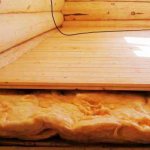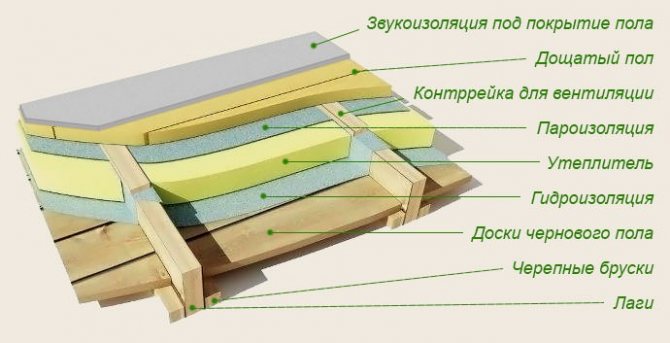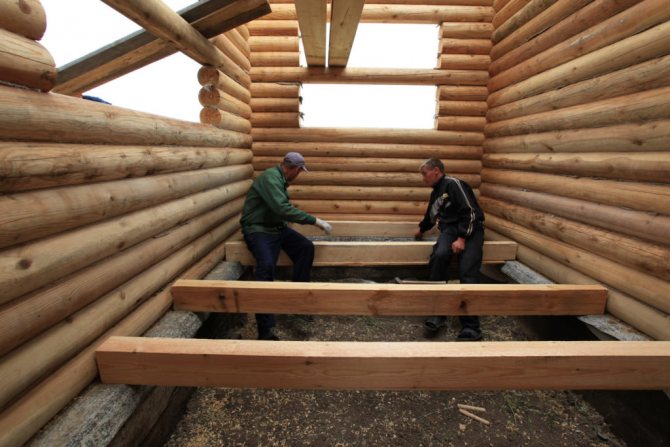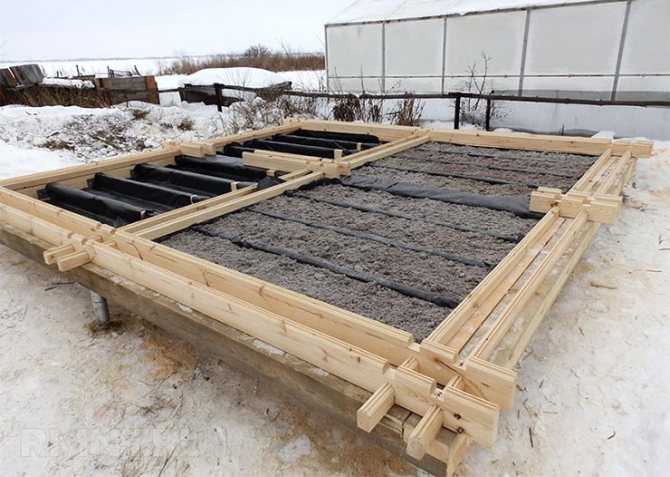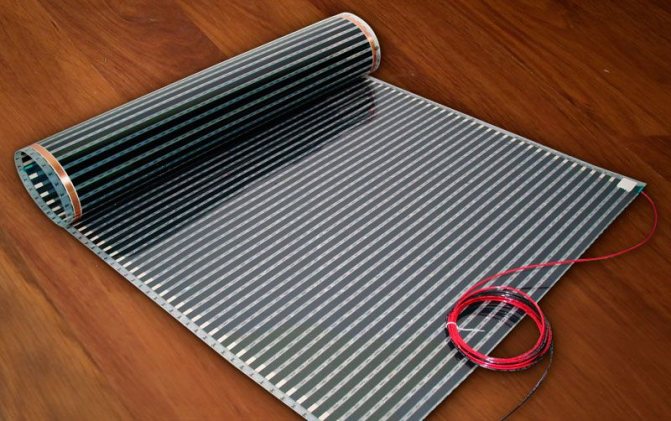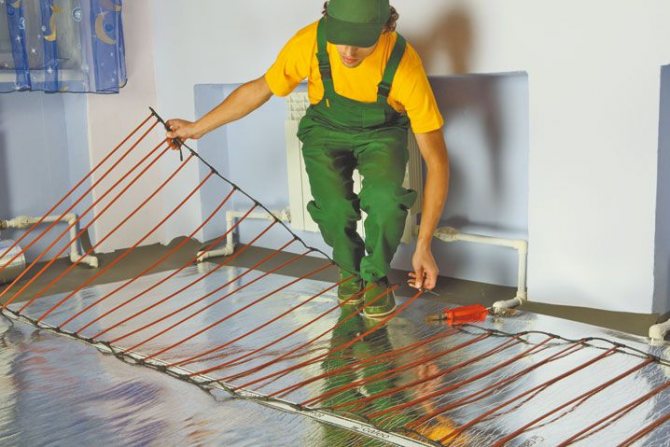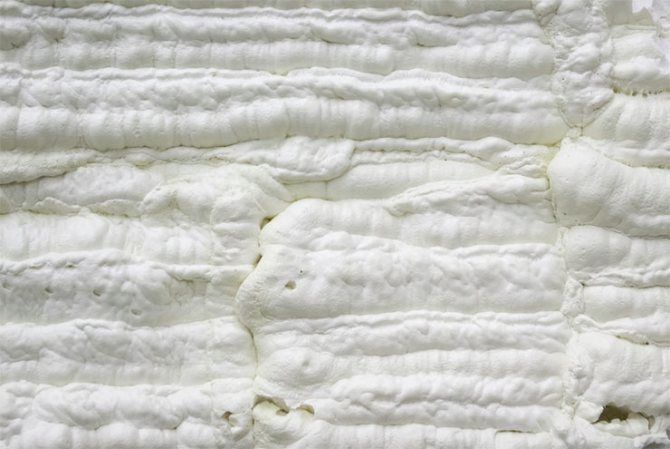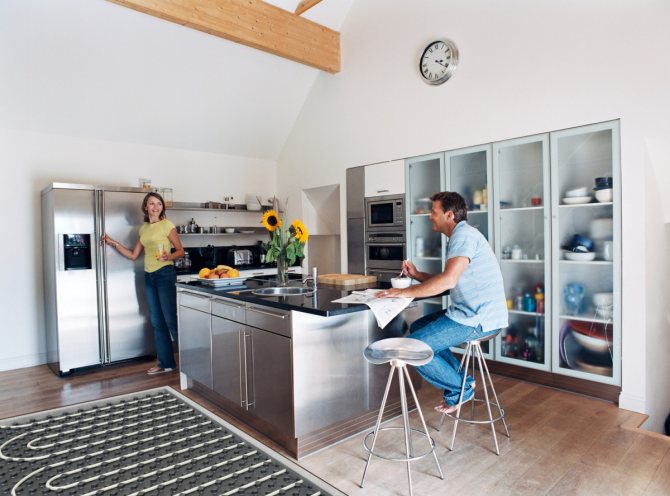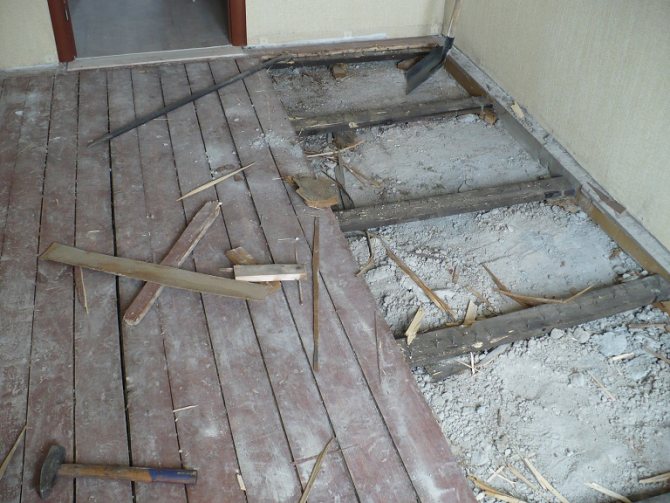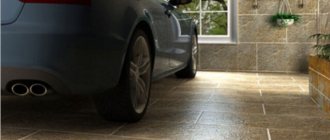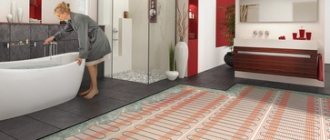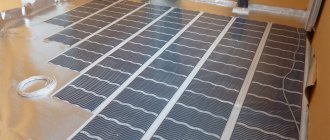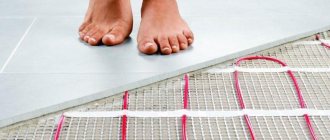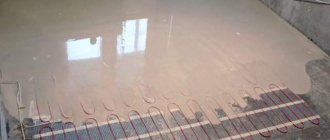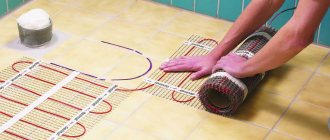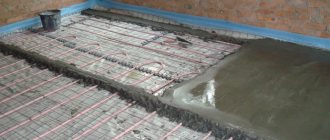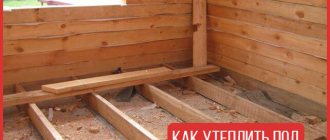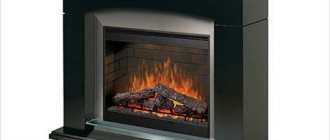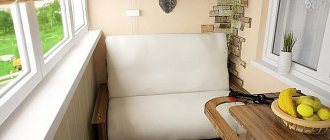In buildings made of wood, the problem of indoor microclimate is especially acute. Due to the drying out of the floor boards and the appearance of cracks along which drafts wander, the heat loss rate can reach 30%.
Timely floor insulation in a wooden house will help to reduce heat costs, especially since it is quite possible to perform thermal insulation without the involvement of specialists. Agree, this approach to solving the issue will save a decent amount and significantly increase the thermal efficiency of the house. Doubt about your own abilities?
We will help you navigate the variety of insulation methods, and we will give you practical recommendations on the choice of thermal insulation material. In addition, we will describe the technology for performing work using the most popular materials: sawdust, expanded clay and foam.
Methods of carrying out thermal insulation works
Insulation laying work can be carried out directly in the living room or from the basement. In the first case, it is customary to talk about thermal insulation from above, in the second - about thermal insulation from below. In addition, you can use other methods of floor insulation, which will be discussed in more detail below.
Method number 1 - installation of insulation from above
In this case, the insulation is laid directly in the room. Such work is quite easy to perform, but a number of problems can arise.
Disadvantages of "surface" installation of insulation:
- the height of the walls decreases;
- the lower layers of the structure do not warm up enough;
- the thermal insulation layer is under increased stress, which is why it is required to select a material of increased rigidity.
Due to the difficulties listed above, experts, answering the question of how to properly and easily insulate floors in cottages and wooden houses, recommend using this technology only in special cases.
It is necessary, for example, if there is a shallow underground under the building or the building is on a monolithic slab.
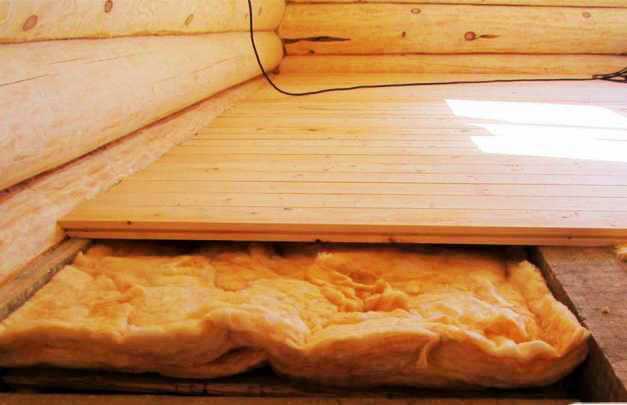
It is advisable to leave a small gap between the layer of heat-insulating material laid on the logs and the topcoat to ensure free passage of air flows
Work on the installation of thermal insulation begins with the dismantling of the baseboards and the finished floor, which is necessary to gain access to the logs. After that, the support bars are inspected.
The found rotten areas must be removed, replacing them with fragments of new beams that are suitable in size, which are fixed using galvanized metal corners or channels.
A cranial bar is strengthened along the lower edge of each lag. Planks or wooden boards, approximately 30 mm thick, are placed on the prepared structure without fasteners. The created structure must be treated with an antiseptic.
The length of each fragment should be less than the pitch of the lags by 10-20 mm.
On the assembled sub-floor, waterproofing, insulation, a vapor barrier, a counter-strip that creates a ventilation gap are laid, and finally a final floor covering.
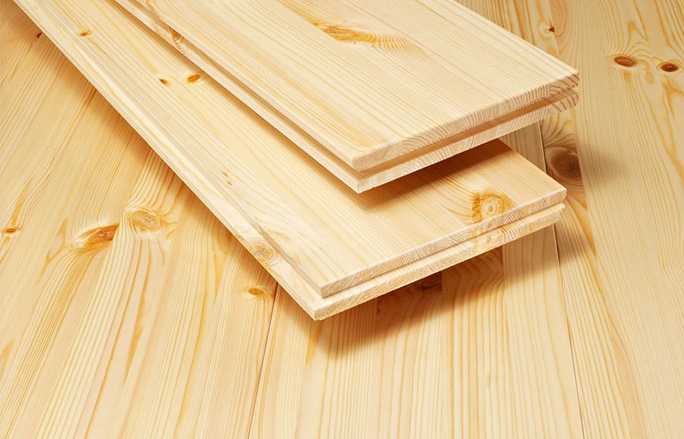

If the finished floor is made of a grooved board that is in good condition, it can be reused. To facilitate the subsequent assembly process, it is advisable to number the boards during dismantling.
Method number 2 - insulation from the basement side
With the option of floor insulation in a private wooden house from below, the installation of the protective coating is carried out between the frame elements and the upper finishing layer.
Carrying out work in this case requires more labor than laying the insulation on top, but the result provides a number of advantages.
The main advantages include:
- the height of the room remains unchanged;
- the insulation layer is not influenced by the load from heavy furniture standing on the floor, which allows you to use any kind of materials, regardless of their rigidity;
- the heat insulator, laid down from the bottom, provides protection from freezing not only to the top layer, but also to the entire floor frame - this reduces the risk of moisture penetration, which increases the service life of the structure.
This option is well suited for frame structures installed on pile and pile-screw foundations.
A prerequisite for the use of such technology is the presence of a cellar, basement or other auxiliary room under the house.
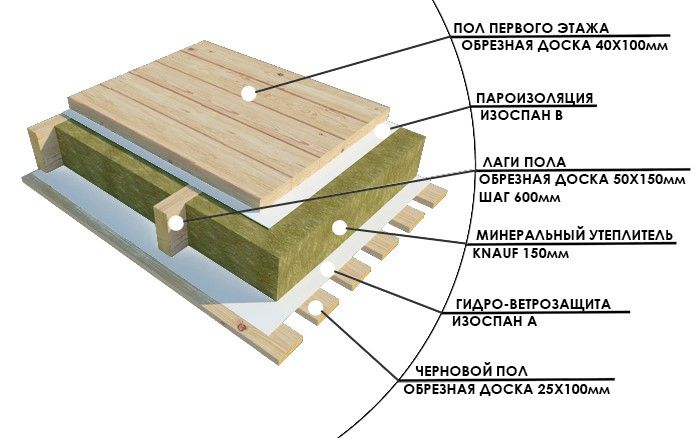

Bottom insulation, as a rule, is made on lags. Boards are laid on these bars with parameters 5 * 10 centimeters, and then other insulating layers indicated in the diagram
The following work procedure is recommended:
- First of all, it is necessary to dismantle the rough old floor in order to gain access to the logs.
- The beams should be cleaned of debris and their condition inspected, replacing the deteriorated fragments as described above.
- A vapor barrier, such as a membrane, must be installed around the perimeter of the ceiling. If materials are used in rolls, the width of the overlap of the strips should exceed 10 cm.
- A 30 * 30 mm cranial bar must be nailed to the side walls of each log. It will serve as a support for the thermal insulation material and create a ventilation gap between it and the finished floor.
- After that, the installation of insulation is carried out, the thickness of which should not be greater than the height of the log. Depending on the type of thermal insulation, it is reinforced with assembly glue, foam or a transverse strip.
- A layer of waterproofing is applied on top of the heat insulator layer, which can be used as roofing material or ordinary polyethylene film.
The final stage is the application of a topcoat: boards, waterproof plywood or other materials.
Method number 3 - double floor device
For a qualitative reduction in heat loss in wooden buildings, double floors are often applied. In this case, the first thing to do is to install the lag. Uncut boards are fixed on them, which form the so-called subfloor.
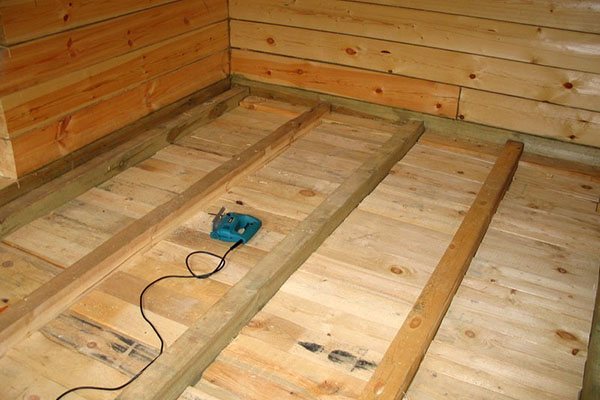

When performing double floors, it is important to ensure that the subfloor boards fit snugly against each other, while the cracks are filled with polyurethane foam. To grout the gaps in the finish coat, you can use putty compounds designed for wood.
Next, a lag is installed, made of a thinner beam. The space between them is filled with heat-insulating material. Then a finishing floor is applied, made of a tongue or edged board.
If desired, a finishing decorative coating is also used. It is convenient to place service communications between two wooden layers: corrugated pipes with cables, a water supply network.
Instead of laying the subfloor, you can use various types of smooth or embossed floor coverings that have a high degree of thermal insulation. These materials are even preferable as they do not accumulate debris.
Such a layer is attached with a booster glue, which is applied to the material in the form of strips with the obligatory gluing of all joints.
Read more about the technology of floor insulation by logs in this article.
Method number 4 - underfloor heating system
The "warm floor" technology, which also uses traditional insulation materials, is very popular, which is quite natural.It provides uniform heating of the entire coating, due to which a comfortable room temperature is effectively realized and its humidity is reduced.
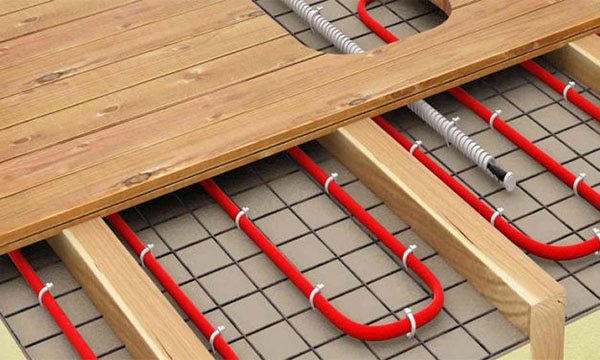

When choosing a floor heating design, it is best to dwell on the option that allows the heating temperature to be adjusted. This will not only maintain a comfortable temperature in the room, but also provide economical energy consumption.
There are two options for such systems, in which heating is carried out using water or electric current.
Water floor build, adhering to the following sequence of actions:
- Prepare the base, for which concrete slabs are installed or cement screed is performed.
- The surface is covered with the selected insulation, the thickness of which can vary from 2 to 10 cm.
- A reinforcing mesh is laid on top, along which a system of pipelines is mounted, fixed with plastic clamps.
- Next, the surface is filled with a special material, and, if necessary, a substrate is arranged.
- The final stage of the work on the arrangement of the water floor can be considered the installation of the topcoat.
Electric "warm floor" is performed similarly to the option described above, however, as a heating element, a cable stretched on a metal mesh is used here, which is firmly connected to the logs.
The laying technology and connection diagrams of the electrical heating system are described in detail here.
An alternative heating source is infrared film materials, which are laid directly on the heat-insulating layer covering the screed.
The importance of hydro and thermal insulation
It should be especially emphasized that for the correct insulation of floors in wooden houses, one should not forget about laying hydro / thermal insulation layers.
The waterproofing coating is designed to protect the structure from moisture that falls on a warm surface when cold air flows. Water particles penetrating into wooden elements lead to the development of fungi, mold, and, ultimately, to the destruction of the structure.
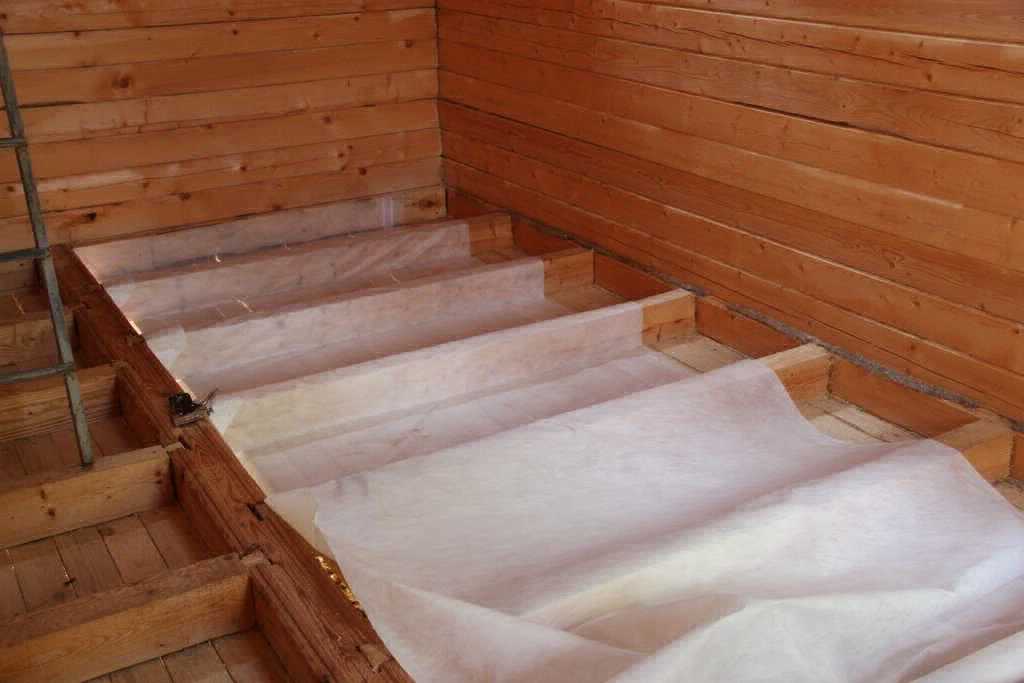

For hydro and vapor barrier, you can use moisture and windproof membranes, which allow air masses to circulate, trapping moisture inside. A budgetary replacement for specialized materials can be plastic wrap
The vapor barrier layer is no less important. Electrical equipment operating in the house, as well as people in the rooms, constantly generate heat. Heated air currents from the premises, which pass through the ceiling structures, come into contact with cold air masses.
This leads to the loss of condensation, the consequence of which can be the swelling of the tree and its decay.
Requirements for thermal insulation materials
There are many types of insulation, ranging from simple natural materials to complex synthetic compounds.
In order to make the right choice, you need to take into account a number of factors, namely:
- Thermal conductivity... The higher this indicator, the lower the heat loss will be.
- Term of use... It depends on this, after what period of time repair work will be required with the replacement of material.
- Insulation weight... Too heavy options are not recommended for use in frame houses.
- Moisture resistance... This factor is especially important if the building is located in a lowland or swampy area, as well as when building houses in a humid climate.
- The presence of an unheated room under the floor. In a cold basement, it is better to give preference to denser thermal insulation.
- Difficulty level at work... Ease of installation can be considered an undeniable advantage.
- Fire resistance... The insulation must not burn or support combustion, and also emit gases hazardous to health when heated.
It is also necessary to take into account the ability of the material to resist mold, fungi and other destructive biofactors.
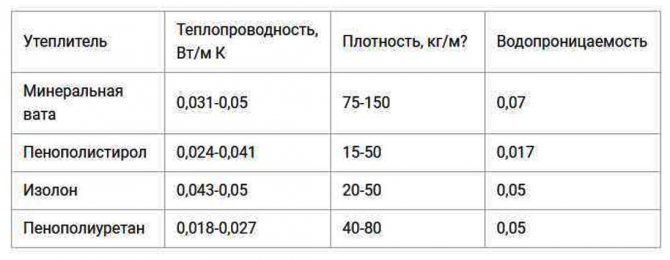

When choosing a thermal insulation material, it is useful to use a comparison of the most important indicators. However, at the same time, one should not forget about the features of various types of insulation.
Finally, an important criterion is the cost of the heat-insulating material. Do not chase after cheapness: expensive products are usually easy to install and have a long service life, which saves on labor costs and repairs.
Popular materials for insulation
Among the most commonly used heaters are:
- sawdust;
- expanded clay;
- mineral wool;
- Styrofoam;
- penoplex.
Sawdust are still quite popular for thermal insulation work. It is an environmentally friendly, affordable and inexpensive product, moreover, it is convenient to use it in hard-to-reach places.
However, it also has disadvantages: over time, sawdust cakes, which leads to a loss of quality, they are also susceptible to the effects of microorganisms, fungi, insects.
Expanded clay - bulk material formed during the firing of clay or shale. This completely eco-friendly material in the form of balls has high thermal insulation values.
It is resistant to freezing and has good fire resistance. The disadvantages of expanded clay include a relatively large weight, in addition, this material cakes, which leads to shrinkage of the house and a drop in thermal conductivity.
Mineral wool it is considered one of the best insulation materials, since it does not burn and does not collapse under the influence of biofactors. In addition to a good indicator of thermal insulation, it also has sound insulation properties.
Among the negative qualities, one can note a small mechanical strength and a deterioration in insulating qualities when exposed to water or steam, which requires special attention to steam / waterproofing.
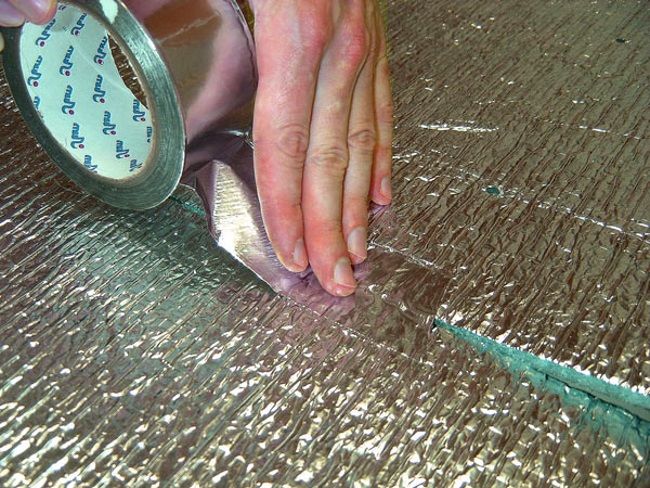

Penofol is a foamed plastic foil on one or both sides. Due to its flexibility, the material is convenient to use for insulating rooms with complex configurations, it can also be combined with other insulation
Styrofoam became widespread. It easily retains heat, effectively retains heat loss, has sufficient mechanical strength, and has a long service life.
It is necessary to remember, however, about the negative qualities of this material: when burning, the foam emits toxic substances, in addition, it is able to absorb water, which leads to a decrease in performance.
Penoplex... A relatively recent material that quickly gained popularity. This type of insulation consists of foamed polystyrene plates, which have excellent thermal insulation characteristics. Plates, easy to install, do not burn and are not susceptible to bioorganisms.
Other synthetic and natural materials are also used as insulation, including isolon, penofol, ecowool, cork, fibrovit.
Choosing a cover
The kitchen is a special room in an apartment, the flooring in it should not only be practical and beautiful, but also:
- hygienic - easy to clean;
- moisture resistant - since the kitchen is the second most humid room after the bathroom;
- wear-resistant - increased resistance to abrasion;
- shockproof - to withstand the fall of heavy objects.
Not all material that is used as a finish meets these requirements. Let us consider in more detail the permissible types of coatings for warm floors.
Tile
For the kitchen, tiles are an ideal solution, they are environmentally friendly and do not crack, even at a high degree of heating, moisture resistant and easy to clean.But a quick warm-up does not always have a beneficial effect on the legs.
When choosing a tile, one should pay attention to its hardness and porosity. The density should not be too low.
The warm floor in the kitchen under the tiles turns on only after the glue has completely dried.
Self-leveling floors
Self-leveling floors in the kitchen are gaining popularity. It does not need additional screed, as it itself has leveling properties. In addition, it is easy to clean, not afraid of moisture and scratches, and a service life of up to 50 years. The variety of colors is huge, it is even possible to embody the idea with a 3D effect.
But this type of coating is modern and fairly new, so it costs a lot. In addition, experience is required for its construction, otherwise the quality will not be high, and it is better to entrust the work to a professional.


The specifics of working with popular heaters
The installation of different types of heat insulators has its own characteristics, which can be seen on the example of three popular materials.
Features of working with sawdust
Sawdust can be used directly by pouring them into the space between the logs, but it is more advisable to use them in the form of a solution. For this, a mixture of five parts of sawdust and one part of cement or clay is compiled, which is diluted with half the amount of water.
It is advisable to add broken glass or special additives directed against the appearance of rodents to the prepared mix.
The voids between the lags must be carefully and thoroughly filled with a freshly prepared mixture. The layer must be very even, otherwise there will be "holes" in the protective coating, as a result of which the floor will remain cold.
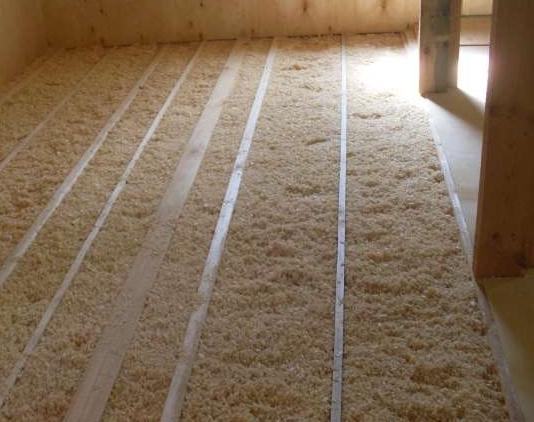

If ordinary sawdust is used for thermal insulation, before starting work, they must be well dried and treated with an antiseptic; you can also add dry lime to them
Thermal insulation with expanded clay
Expanded clay is an inexpensive type of insulation, the work with which also has its own characteristics. In this case, sand is additionally performed. This material is neatly and evenly applied to the base, and then carefully tamped.
As a waterproofing, liquid mastic is poured onto the sand layer, after which expanded clay is backfilled, while monitoring the maximum evenness of the coating. Next, the installation of a vapor barrier is carried out, on top of which the finishing is laid.
Expanded clay is a rather heavy material, so it is not recommended to use it when insulating buildings on a frame foundation.
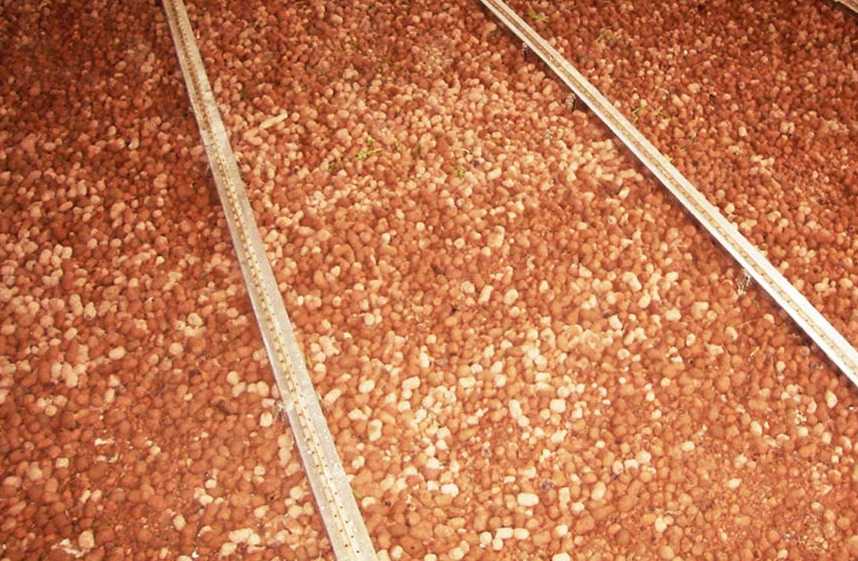

When insulating with expanded clay, it is better to give preference to a material of different fractions, the elements of which differ in size, weight and other characteristics. In this case, the granules adhere more tightly to each other, due to which there are no pronounced voids in the layer.
Special techniques when working with penoplex
Penoplex is a common insulation option. When using it, precise adjustment of the plates is required, which creates a barrier to the penetration of cold air. Sheets are laid between the joists, and for maximum adhesion they are attached with mounting glue to the floor and to each other.
Lightweight insulation penoplex is considered the best option for thermal protection of the floor in a frame house. It provides a minimum load on the foundation, which avoids shrinkage of the structure.
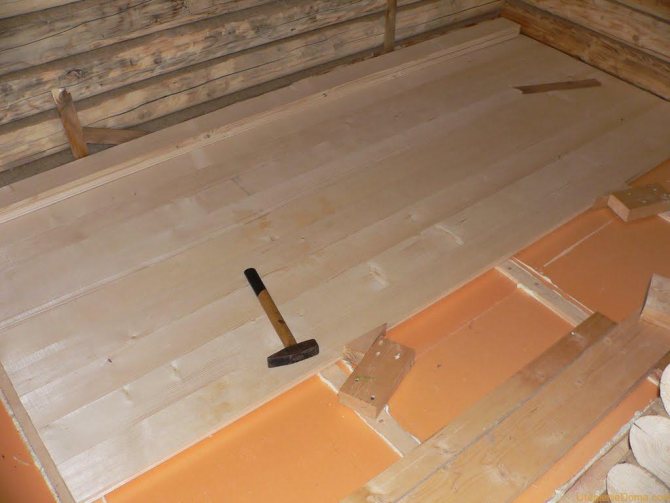

Penoplex plates are convenient to use for both upper and lower thermal insulation. Since this material does not allow water to pass through, the waterproofing layer can be skipped in this case.
Do you need a warm floor in the kitchen?
Installing a warm floor in the kitchen is not always justified. Let's consider all the pros and cons that will help determine whether additional heating is necessary in your case.
The need for a heating device arises if:
- you like to walk barefoot - to maintain your health;
- you live on the ground floor or in a private house - the floor is not heated with conventional heating and remains cold;
- after renovation, the kitchen is combined with a balcony - it is difficult to create the desired temperature level without an additional heat source;
- planning to use tiles or laminate flooring - this is a cold material.
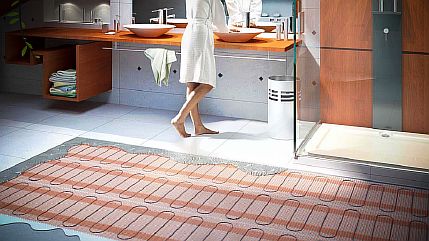

If your heating system heats up the room well, then there is no point in arranging additional heating. Also, when used as a finishing warm material - wood, cork or linoleum, it is also not needed.
In addition, the wood will dry out from constant heating, as a result of which cracks will appear. And when laying linoleum on a heating surface, it will release toxic substances. Another moment when a heated floor is not needed - if the windows face south, the sun's rays will warm the room.
That is, it is necessary to decide on the need to install a heating structure, taking into account the layout and location of the kitchen, as well as your temperature preferences.
Conclusions and useful video on the topic
The video below demonstrates the process of insulating a house on logs using mineral wool:
Video review detailing modern types of heat insulators:
In order to perform high-quality thermal insulation of the floor, it is important to carefully select the material, taking into account its features and the specifics of the structure of the building. Equally important is the observance of the installation technology recommended for this type of insulation, as well as the careful execution of all stages of work.
Do you have experience with floor insulation in a wooden house? Please tell the readers what kind of thermal insulation material you used, if you were satisfied with the result. Comment on the publication and participate in discussions - the feedback block is located below.

